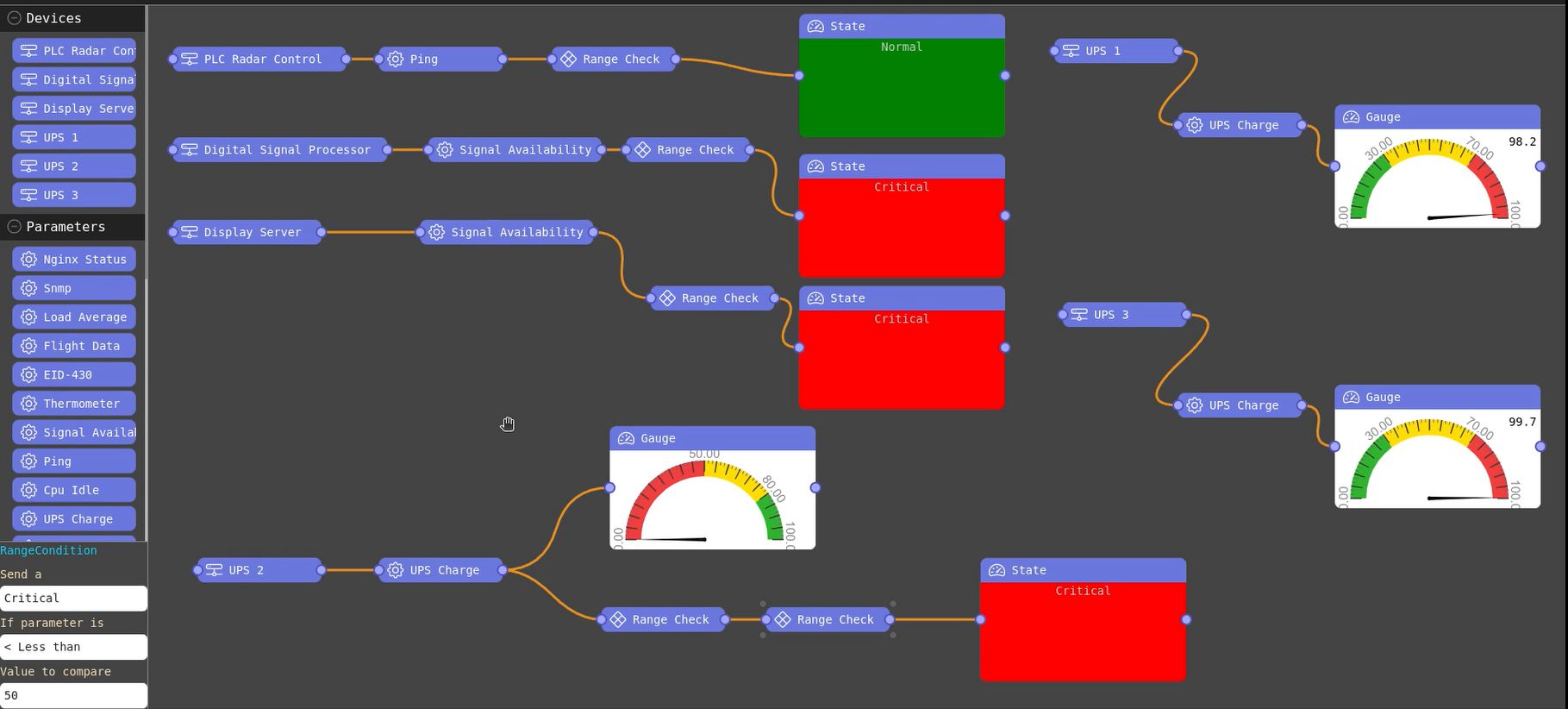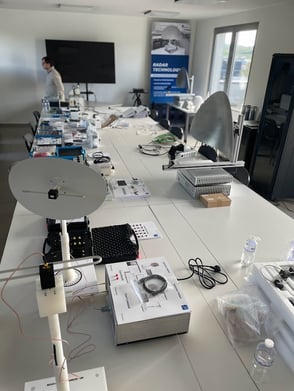Unlocking resilience, efficiency, and interoperability in ANSPs, airports, and airlines through virtualization. This article describes how to optimize resources, enhance security, and drive success.
In previous articles, we discussed interoperability and automation, to make adaptive trajectories possible, with strong impacts on cost reduction, time saving and the reduction of CO2 emissions. Virtualization and service oriented architecture play an important role in this quest.
However, if we move our focus slightly away from this collaborative scenario, it also brings advantages to the specific players in this ecosystem, meaning the ANSPs, the airlines, airports and other participating agents.
Virtualization has emerged as a pivotal technology across various sectors, including Air Navigation Service Providers (ANSPs), airports, and airlines. By adopting virtualization, these entities can unlock a range of advantages, including enhanced resilience, improved operational efficiency, and dynamic interoperability.
This article delves into the significance of virtualization in ANSPs, airports, and airlines, highlighting how it drives their success in an ever-evolving industry.
Resilience through Virtualization
Virtualization empowers ANSPs, airports, and airlines to fortify their infrastructures, enabling them to withstand unexpected disruptions and maintain uninterrupted operations. By leveraging virtual machines (VMs) and creating backups, these entities can swiftly recover from hardware failures or natural disasters. Additionally, the ability to perform live migrations of VMs facilitates non-disruptive maintenance activities, ensuring continuous service availability. Virtualization enhances their resilience and reinforces their reputation for reliable operations.
Efficiency Boost through Resource Utilization
Virtualization plays a pivotal role in optimizing resource utilization for ANSPs, airports, and airlines. Through the consolidation of physical servers into VMs, these entities can streamline their infrastructure and reduce hardware-related expenses. Running multiple operating systems and applications on a single server enhances computational efficiency, resulting in heightened productivity.
By eliminating resource wastage and maximizing computing power, virtualization enables these entities to achieve higher efficiency in service delivery.
Dynamic Interoperability and Scalability
Virtualization brings dynamic interoperability and scalability to ANSPs, airports, and airlines, enabling them to swiftly adapt to changing demands. With virtual infrastructure, these entities can easily allocate and reallocate computing resources based on evolving requirements. This flexibility empowers them to scale their infrastructure in response to surges in demand, ensuring uninterrupted service provision during peak periods. Virtualization serves as a catalyst for agile operations, facilitating seamless coordination among various stakeholders in the aviation ecosystem.
Cost Savings and Financial Efficiency
Virtualization offers ANSPs, airports, and airlines significant cost savings and financial efficiency. By reducing the number of physical servers, these entities can curtail hardware acquisition and maintenance expenses. Furthermore, the consolidation of workloads onto fewer machines reduces power consumption and associated cooling costs.
Virtualization also enables the adoption of thin clients or virtual desktop infrastructure (VDI), replacing expensive individual workstations with more affordable endpoints. These cost optimizations empower ANSPs, airports, and airlines to utilize their resources effectively while maintaining high-quality services.
Enhanced Security and Compliance
The adoption of virtualization enhances security and compliance measures for ANSPs, airports, and airlines. By isolating services and applications within separate VMs, the risk of security breaches and malware propagation is minimized.
Virtualization platforms offer robust security features, including access controls, encryption, and network segmentation, ensuring the integrity and confidentiality of critical systems and data.
Additionally, virtualization simplifies security updates and patch management through centralized administration, alleviating the burden on IT teams.
Driving Cloud Adoption
Virtualization serves as a stepping stone for ANSPs, airports, and airlines to embrace cloud computing and its associated benefits. The virtualized infrastructure provides a solid foundation for leveraging cloud-based services such as storage, backup, and disaster recovery solutions. By harnessing the scalability, flexibility, and cost-effectiveness of the cloud, these entities can rapidly deploy new services and applications, further enhancing their operational efficiency.
Challenges
Virtualization and interoperation as well as data storage across borders might lead to legal challenges, e.g. concerning the Schrems II ruling of the European Court of Justice Judgment on Privacy Shield (2020). Read our specific articles on this subject on on concerning cyber-security issues.
Summary
In the dynamic landscape of ANSPs, airports, and airlines, virtualization proves to be a game-changer. Through enhanced resilience, optimized resource utilization, dynamic interoperability, and cost savings, virtualization enables these entities to thrive in a rapidly evolving industry. Furthermore, it strengthens their security measures.
SkyRadar's System Monitoring & Control Solution
Virtualized and service-oriented architectures are a keystone in EUROCONTROL's and ICAO's ATM master plans. SkyRadar's SkySMC training infrastructure provides virtualized architectures from servers to radars. A perfect training infrastructure for our ATSEP trainees.

SkySMC - SkyRadar’s System Monitoring and Control Suite is a pedagogically enhanced, fully operational monitoring & control tool. We have optimized it to cater for the ATSEP-SMC training compliant to EASA's Easy Access Rules for ATM-ANS (Regulation (EU) 2017/373) and ICAO Doc 10057.
 SkyRadar provides SkySMC as a complete laboratory in a turn-key approach, or as a service.
SkyRadar provides SkySMC as a complete laboratory in a turn-key approach, or as a service.
SkySMC is not a simulator, but a fully operational open monitoring system. It comes by default with a server including various virtualized applications and virtualized servers, but also connects to simulated systems. In addition, there are various hardware extensions available including training infrastructures, monitorable training radars, or even complete ATM systems, all connected to the System Monitoring & Control solution.
SkyRadar's System Monitoring & Control training system can be easily blended into distance learning solutions.
Let's talk
Stay tuned to be always the first to learn about new use cases and training solutions in radar qualification (real radars or simulators) for ATSEP.
Or simply talk to us to discuss your training solution.




